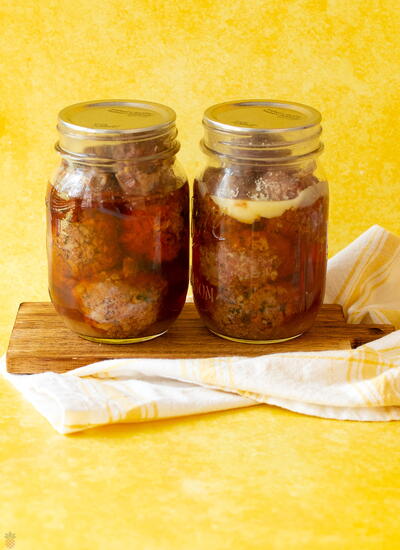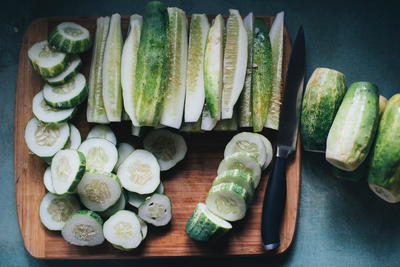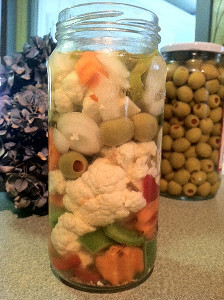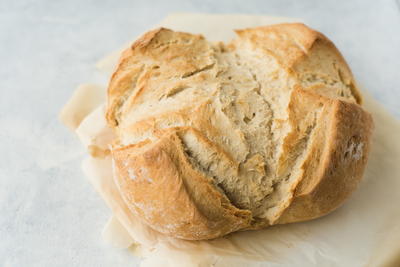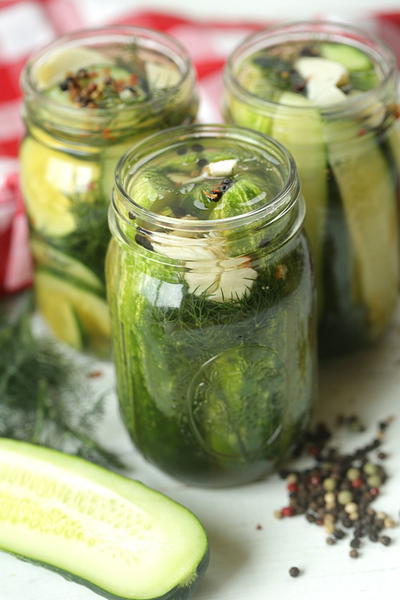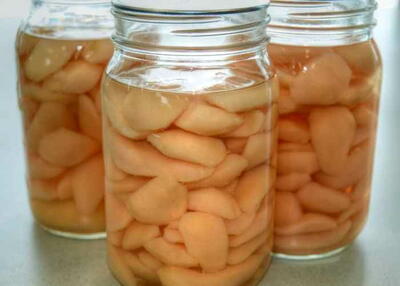Homemade Sauerkraut
Ingredients
- firm heads of mature cabbage
- canning salt
Instructions
For best results weigh the cabbage and the salt using a ratio of 40 pounds of cabbage to 1 (one) pound of salt. We use a kraut cutter and a crock which are over one hundred years old. You can use a bread or cutting board and a large knife to cut the cabbage. Remove the outside green and dirty leaves. Cut the heads of cabbage in half and remove as much of the core that you can. Now is the time to weigh the head of cabbage. We keep a running total of the cabbage we use to make sure that we use the right ratio of salt to cabbage. When we find out the total amount of cabbage we are using then we measure out the exact amount of salt needed. Shred the cabbage using either a kraut cutter or a knife. We use a kitchen scale to weigh the cabbage and salt. Put about 5 pounds of cabbage and about 2 ounces of salt into a large bowl and mix with your hands. Put into a crock and pack gently with a potato masher and tamp the cabbage down until some juice comes to the top. The first batch may not bring up juice but, after putting in the second batch of cabbage and salt the juice should easily come to the top. Repeat until you have used up all the cabbage and the correct amount of salt. You must not store your kraut in a metal container. After the last shredded cabbage and salt are put in the crock work the cabbage with the potato masher until juice comes to the top. We use a piece of white cloth such as a piece of a sheet to cover the kraut. Then we put boards on the cloth and a stone to weigh the kraut down so the juice comes to the top. Some people use one or more large plastic bags filled with water to weigh the kraut down so it is under the juice. If you use plastic bags make sure they are the kind that can be used with food. Garbage bags won't do. During the curing process, kraut requires daily attention. Remove scum as it forms and wash and scald the cloth often to keep it free from scum and mold and wipe the side of the crock. Fermentation will be complete in about three weeks. The kraut should be kept in a place where the temperature is in the mid 50s to low 60s. It needs just enough warmth to keep it working during the fermenting process. Yet not so hot that it will spoil. Kraut works from the top down. To check to see if the kraut is ready wait about 2 weeks and dig down in the center of the kraut about 5 or 8 inches. Take a little out and taste it. The kraut should be firm but not crunchy and should have good kraut flavor. If it is not ready let it sit for a few more days and then taste it again. The following is for canning the sauerkraut. As soon as kraut is thoroughly cured, pack into clean canning jars, adding enough of the kraut juice, or a weak brine made by dissolving 2 tablespoons salt to a quart of water, fill jars to with 1/2 inch of top of jar. Put on cap, screwing the band tight. Process in water bath for 15 minutes. This method cooks the kraut. We use double bags (one bag inside of another) to pack the kraut in and then we put it in the freezer. When using this method to store the kraut you need to leave some space in the bags because the kraut will continue to ferment until it is frozen. (We learned this the hard way. Had Kraut spill out into the freezer. It really smelled.) By freezing the kraut it is fresh when taken out of the freezer and has not been cooked. I find that cooking the kraut with the pork chops on a low temperature for three hours it turns out the best. Kraut tastes good raw too. It is not often that we add any sugar at the end of the cooking time but, sometimes if the kraut seems too sour we will add a little sugar. The main thing is to measure your salt and weigh your cabbage. The ratio of 1 pound of salt to 40 pounds of cabbage is very important. To little salt will make the kraut spoil and to much salt will make the kraut to salty. Hints: Weigh cabbage and salt to get the correct ratio. This is important. Keep in a temperature where the kraut will work yet not spoil. Check the kraut often and keep it clean. When the kraut is ready remove about the first inch of kraut from the top and throw it away. The top inch of the kraut usually is kind of soft. You may find that at some time during the fermenting process that there doesn't seem to be enough juice. Just add some plain water. Don't put any more salt in the kraut.

